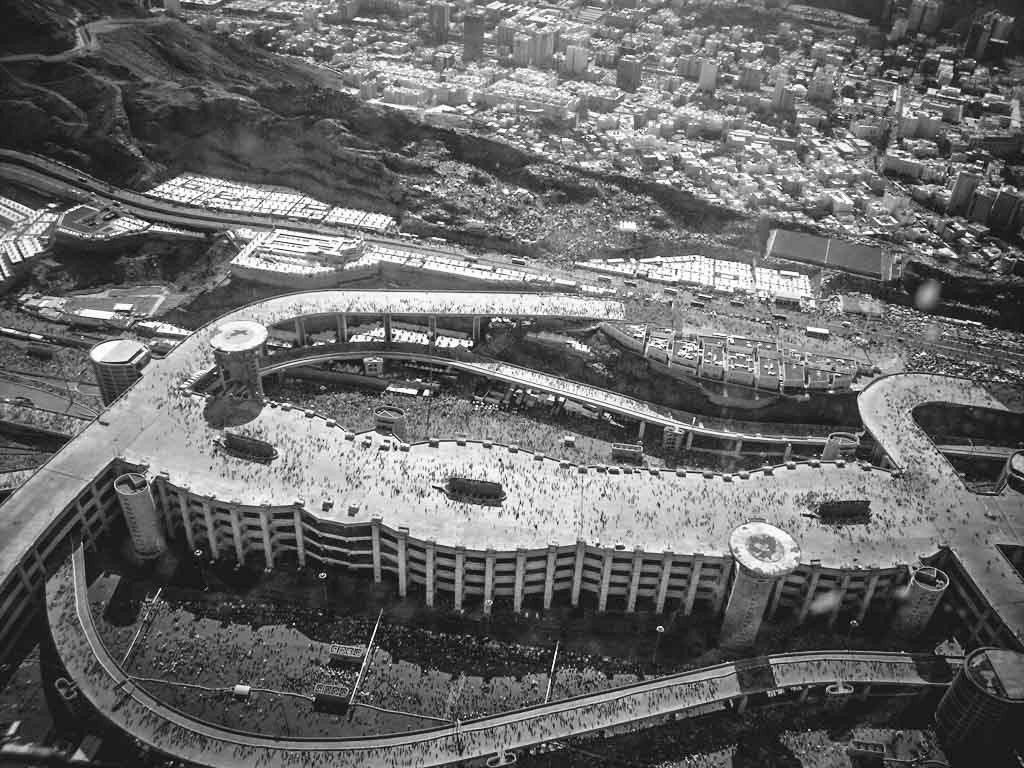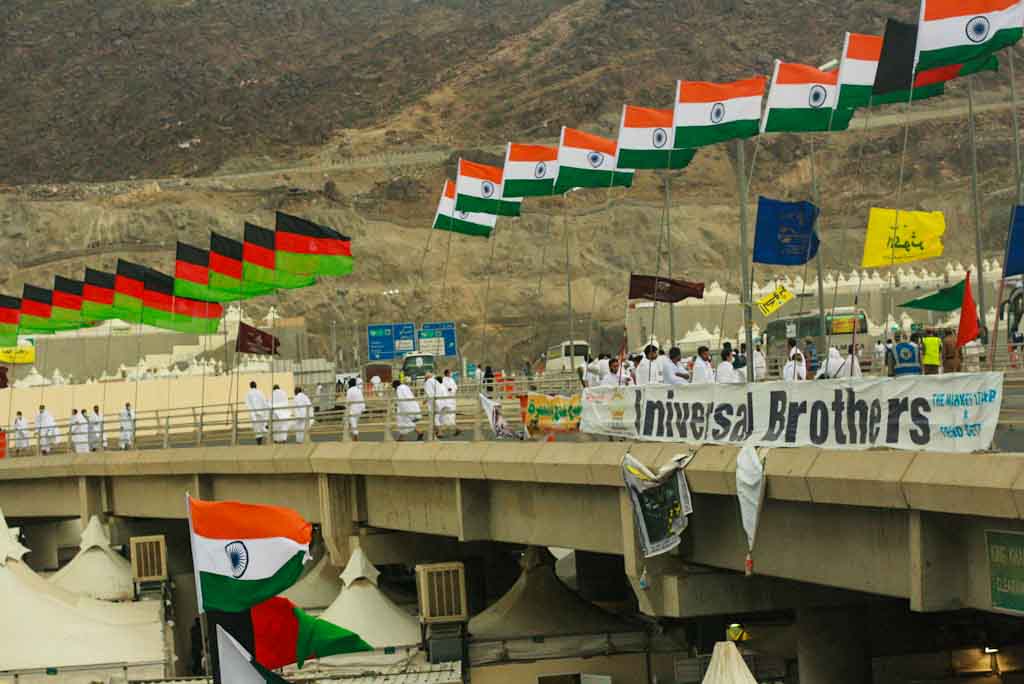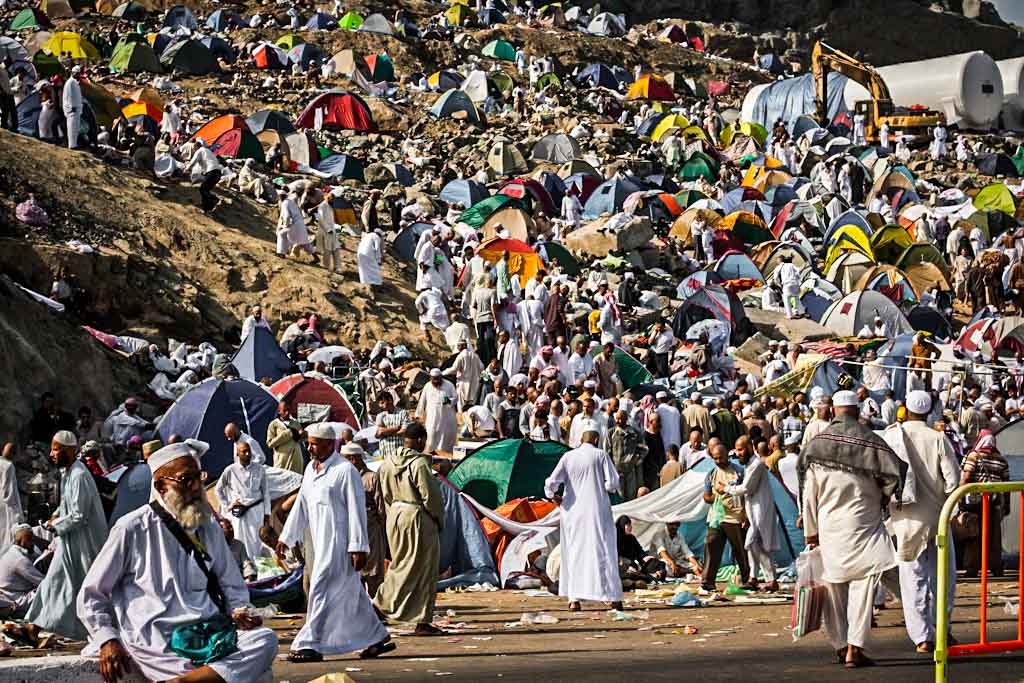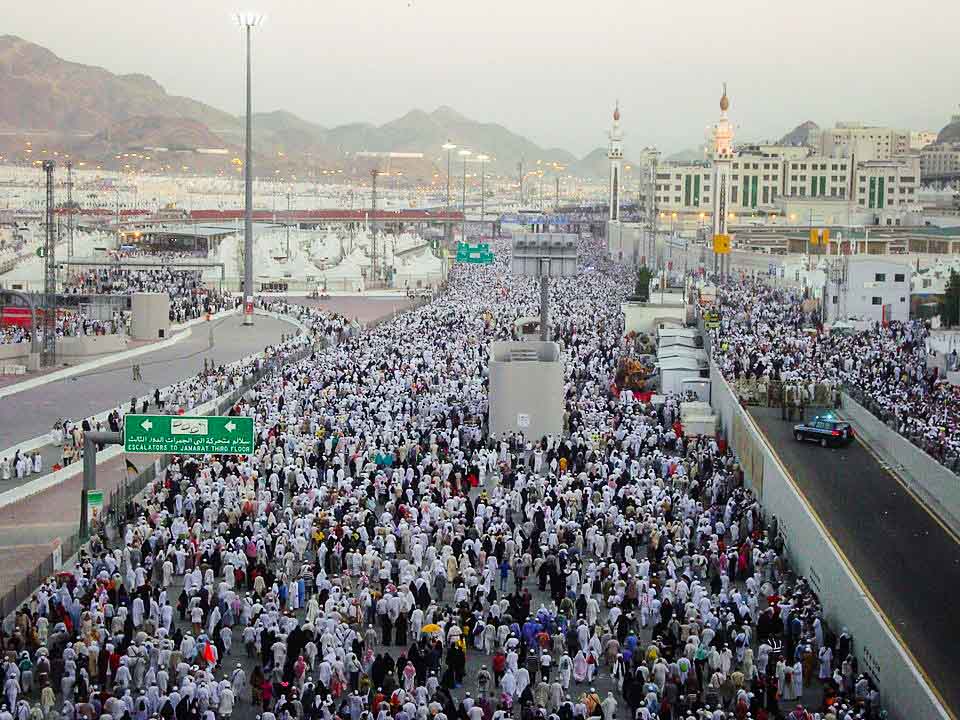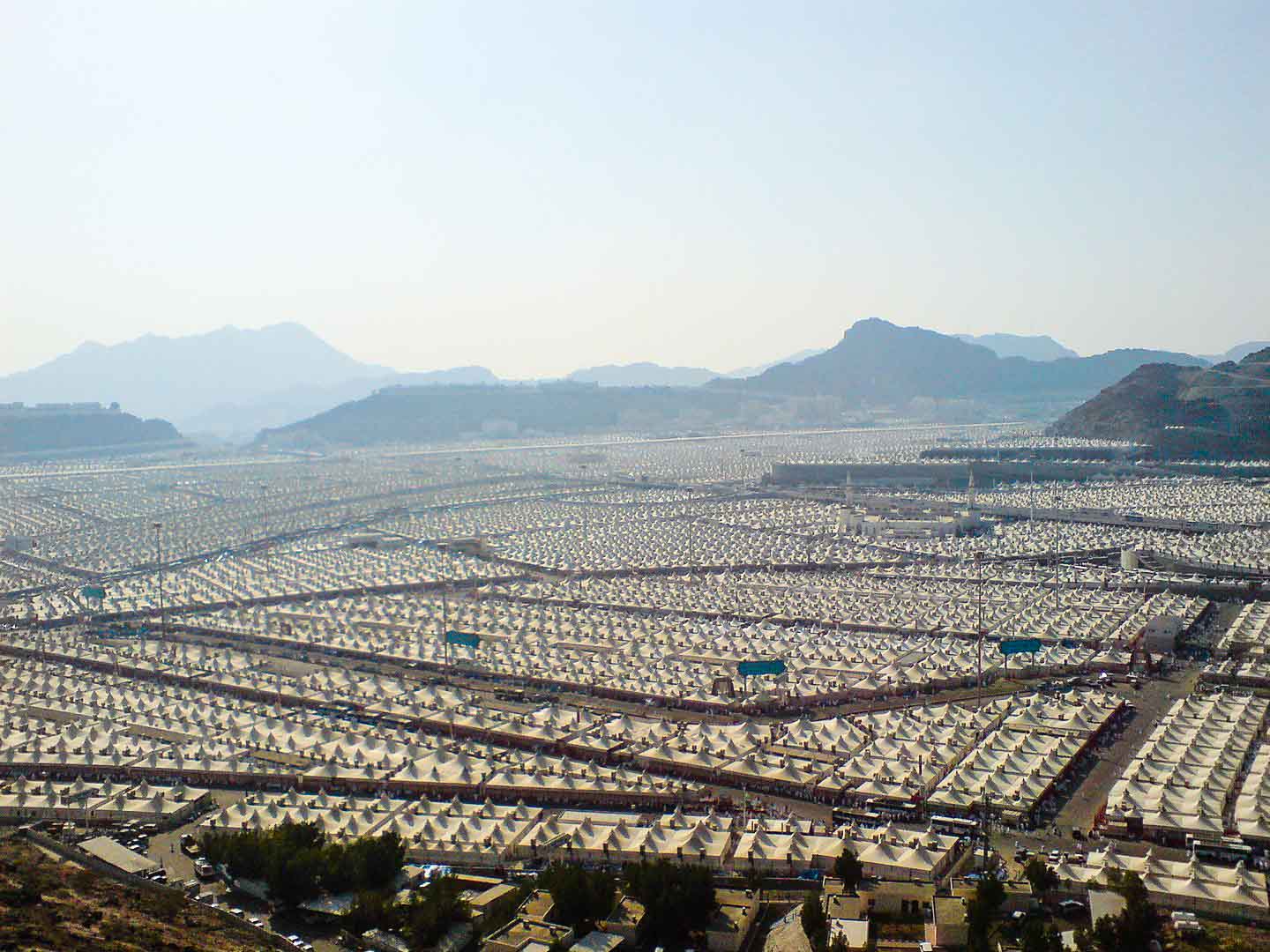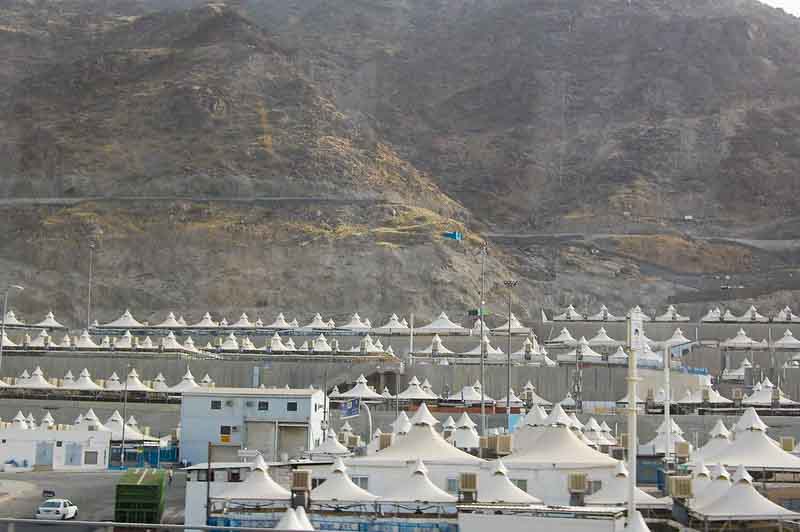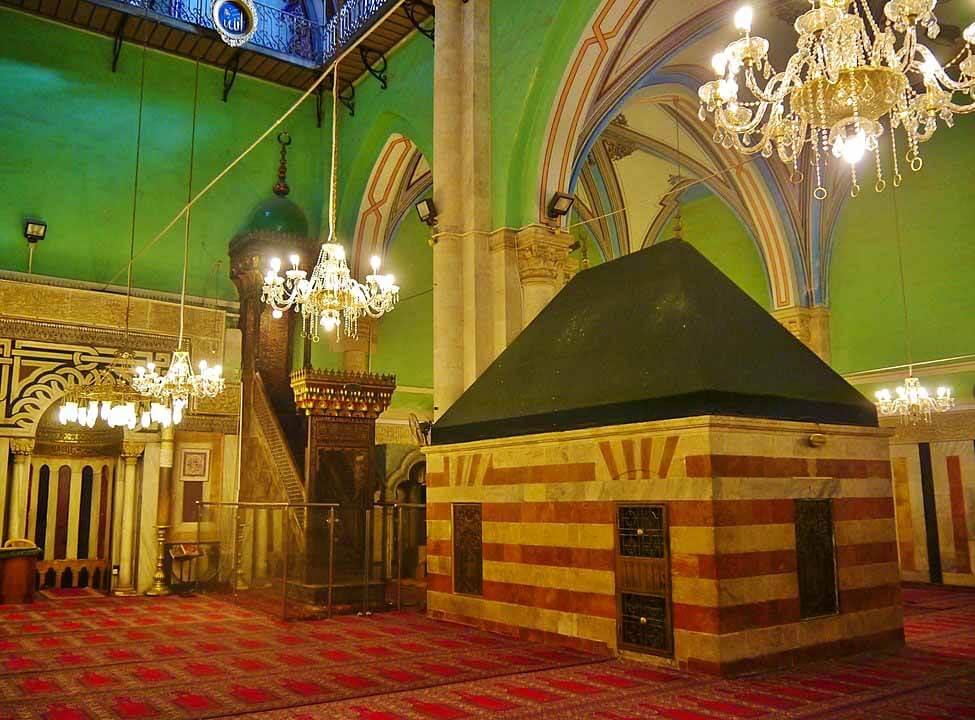Mecca Sharif, Saudi Arabia
Coordinates: 21.414600, 39.894600
Mina is most famous for its role in the Hajj pilgrimage. To accommodate the pilgrims who stay in Mina over multiple nights in the month of Dhu al-Hijjah, more than 100,000 air-conditioned tents have been built in the area, giving Mina the nickname “City of Tents.”
With a capacity of up to 3 million people, Mina has been called the largest tent city in the world.
The three Jamarat, located in the Mina valley, are the location of the Stoning of the Devil, performed between sunrise and sunset in the final days of the Hajj.
In Islamic tradition, Hz. Ibrahim عليه اسلام abandoned his wife, Bibi Hagar رضي الله عنها and their son, Hz. Ishmael عليه اسلام, in the valley of Mecca when Hz. Ishmael عليه اسلام was an infant.
Upon one of his visits to his family in Mecca, he was ordered by Allah in a dream to sacrifice his son in the Mina valley. While carrying out his sacrifice, he was interrupted by a devil and was commanded by Allah to stone the devil. The ritual of the stoning of the Devil is a commemoration of this belief. (Quran 30:100–1170)
The Masjid al-Khayf is located in the center of the Mina valley and is active only during the Hajj. Covering approximately 20,000 square metres (220,000 sq ft), it is the largest mosque in Mina.
Mina is also believed to be the location of the pledges of al-Aqabah.
The Tent City
Before the tents were built, pilgrims would bring their own tents to the valley and dismantle them while returning from the Hajj. Sometime in the 1990s, permanent cotton tents were installed by the Saudi government.
These cotton tents were especially susceptible to fires, which took many of the pilgrims lives.
After the 1997 Mina fires which resulted in the deaths of more than 340 pilgrims, more than 100,000 permanent tents, measuring 8 by 8 metres were built.
These are constructed of fiberglass with an outer coating of Teflon to protect them from fires.
The tents are grouped into camps, each with their own exterior walls, and divided by the nationalities of pilgrims, providing temporary accommodation to up to 3 million pilgrims.
Each camp is equipped with a kitchen, bathrooms, and ablution facilities, and is connected to the other camps by pathways.
The tents are also marked with unique color-and-number pairs to make them more identifiable.
Owing to its location and the extreme numbers of pilgrims during the Hajj, Mina and the surrounding region, especially the Jamarat Bridge, are hotspots for stampedes, the deadliest of which was the 2015 stampede, resulting in the deaths of more than 2,000


